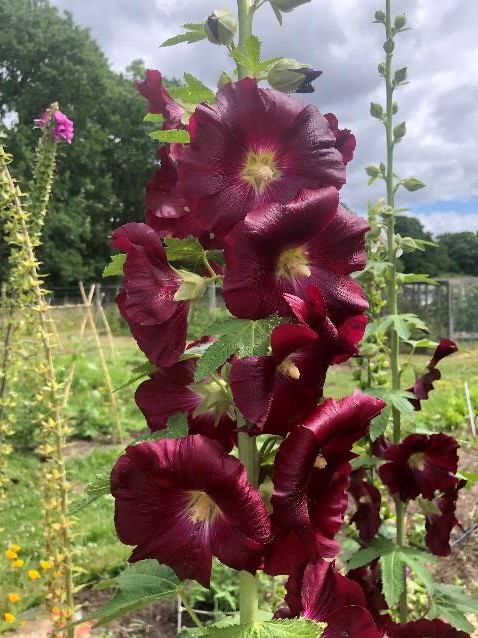JULY 2023
Well hopefully your hives are settling down after the madness of spring, and starting to build up nicely. Last month I performed a Demaree on my largest hive, which is now on beautiful clean brood comb and it is getting a bit tall with the number of supers on it now. I have taken quite a bit of honey from my hives, and it is very floral, delicious. Happily no sign of oil seed rape this year near me.
What is going on in the hive?
The swarming season should in theory be over … but some bees don’t read the books and swarming could still occur, so keep checking your hives and, in particular, make sure they have plenty of room for those nectar flows that are still to come! The queen should be working hard now building up the brood in the hive, and the longer hours of daylight and warmth will mean the foragers will be out from early morning until the evening. I have a couple of Linden trees near me, that flowered a week or so ago. I walked underneath the trees at 9pm, and the tree was still literally quivering and humming with bees at that hour! We cherish flowers and encourage people to plant bee friendly blooms, and I don’t think we appreciate or acknowledge the contribution that trees make.
Check your hives
You should continue your regular inspections once a week to look out for signs of swarming. It is also important to keep an eye on the health of the colony – look at the brood pattern, are the stores building up nicely, is there anything that looks unusual in the hive? If in doubt, maybe ask someone else to take a look – a second pair of eyes is always helpful I find. I recently inspected a colony from a swarm I collected to see a sea of faces looking at me – the bees had been uncapping cells when the brood was at pink eye stage, to check for varroa I assume. Good hygienic behaviour!
Now is a good time to do a varroa count – put a varroa board in and count up the number of varroa you see after 24 hours (Ed: or an average daily drop over 7 days). According to the FERA National Bee Unit guidance on Varroa you don’t want more than 1,000 Varroa in your hives otherwise there is the risk of colony collapse. You can roughly calculate the number of Varroa in your hive by taking the daily mite drop and multiplying as follows:
- November to February: daily mite drop x 400
- May to August: daily mite drop x 30
- March, April, September and October: daily mite drop x 100
You could also put a super in the brood box, to let the bees draw out the comb below. This new comb is likely to be drone comb, which is preferred by varroa mite. Once the drone brood is sealed, then take the super frame out and open up the drone brood, to see the levels of varroa within these cells. It is a bit of a grisly task, but it gives you a good indication of the level of varroa infestation and it gets rid of a load of varroa too. (And my chickens love the discarded drone brood!).
Take action as necessary using a control such as MAQS, but if the levels are ok, then no need to treat, but keep monitoring.
In your regular inspections, the usual checklist applies:
- Do you see the queen or evidence of the queen (eggs, larvae brood in all stages)
- What does the brood pattern look like? If it is patchy it could indicate that the queen is failing, or a brood disease.
- Look out for evidence of disease.
- What is the temperament like?
- Do you see drones?
- Do you see queen cells? Have your swarm prevention plan to hand. Just destroying any queen cells normally just delays the problem, so be ready to manage this situation.
- Are there sufficient stores – nectar and pollen?
- Is there enough room? If in doubt, add another super!
Don’t forget to keep records updated!
Check the Larder
I certainly didn’t perceive a June gap this year and the roses have been particularly spectacular! Apart from the Linden tree, I also noticed a tree that was covered in bees a couple of weeks ago. According to the app on my phone (I use PictureThis; Ed: another good one is Seek) it was an Alder Buckthorn, which I am now attempting to propagate. Sweet chestnut is now in flower, and I noticed yesterday that Himalayan Balsam is beginning to flower too, and blackberry and runner beans are doing their thing…… As for Crooksbury Common, it is beginning to turn purple with the early heather. Enjoy your bees!





